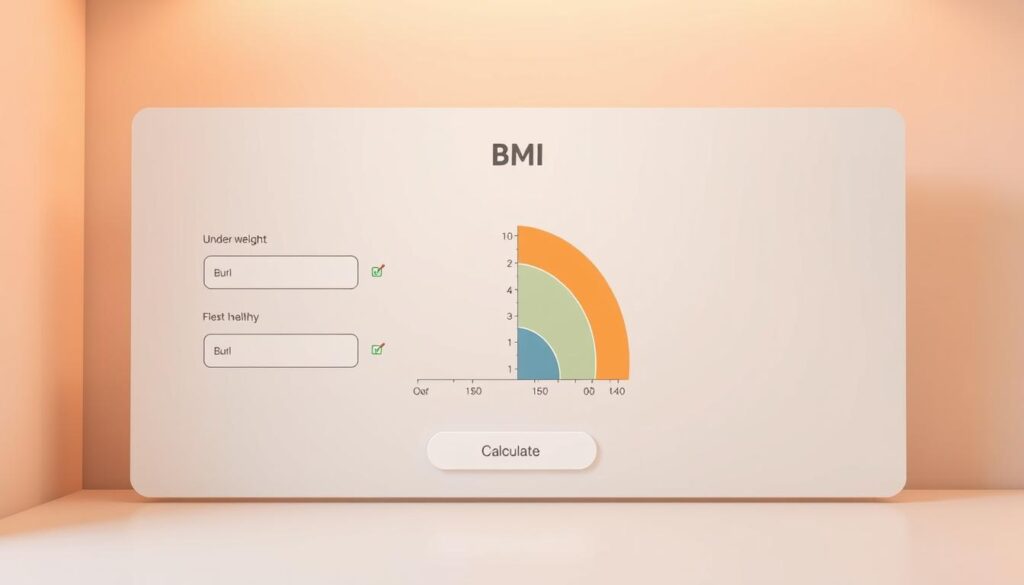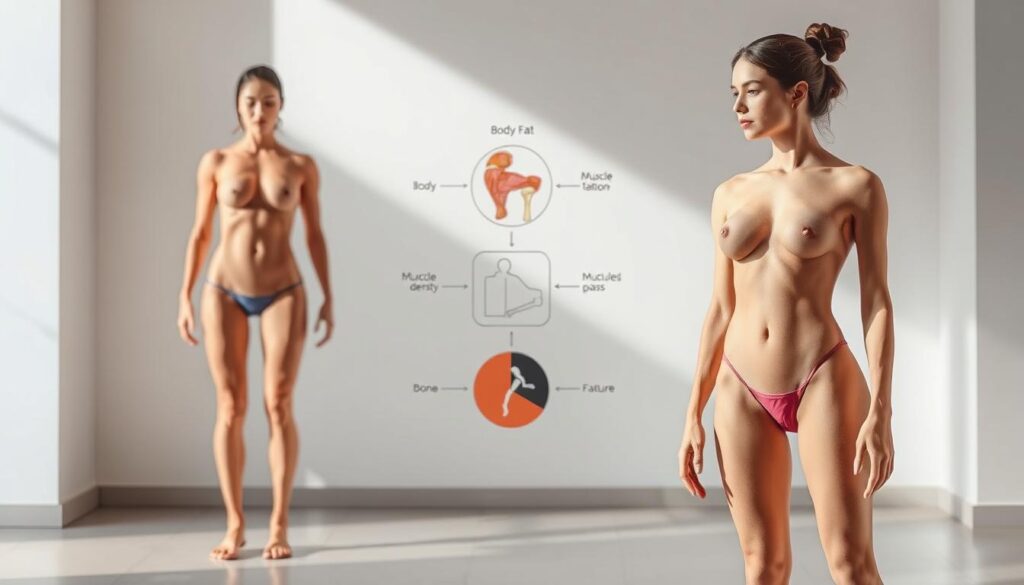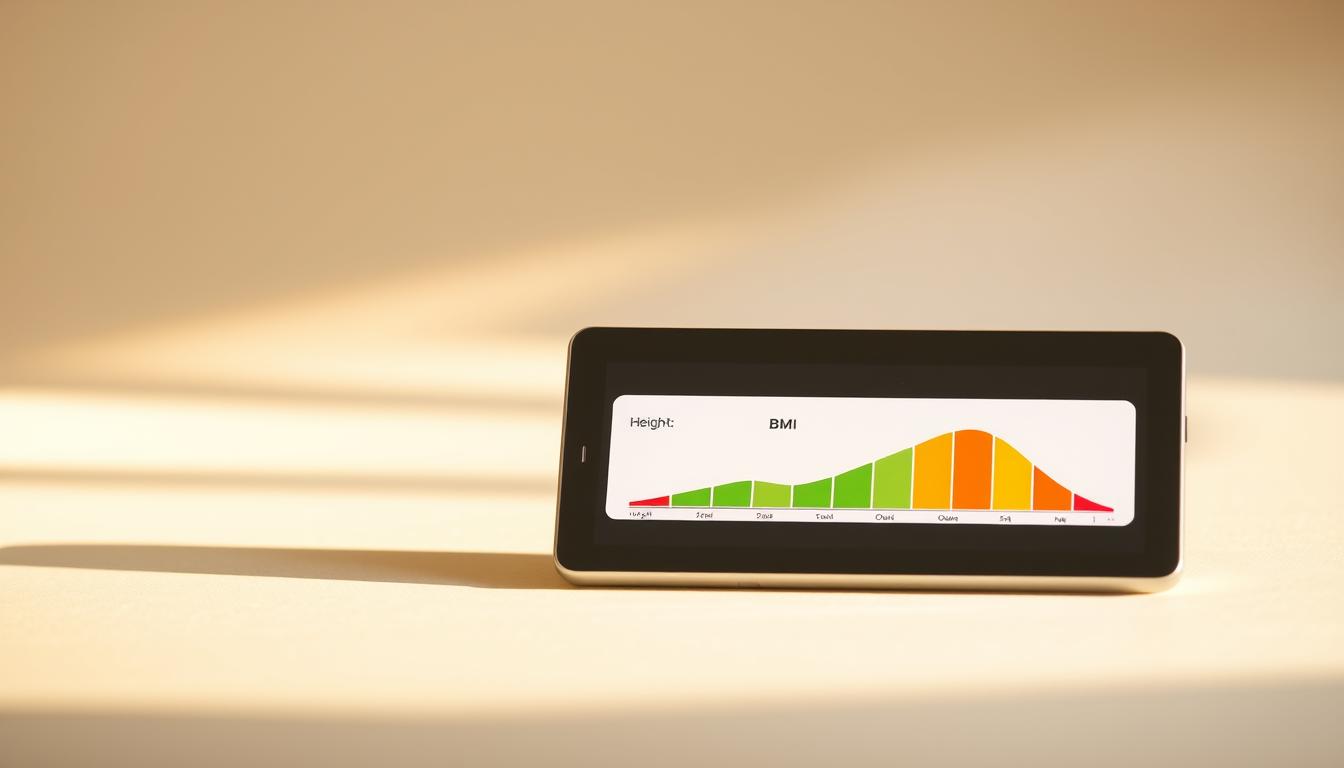What if the number on your scale isn’t the best way to gauge your well-being? For women standing 5’10”, understanding body mass index offers a clearer picture of health than weight alone. This metric, often abbreviated as BMI, calculates body fat using height and weight ratios. But how does it apply specifically to taller females?
Organizations like the CDC and American Cancer Society emphasize BMI’s role in identifying potential health risks. For a 5’10” woman, this measurement helps assess whether her weight falls within a range linked to lower disease risks. However, it’s not a standalone diagnostic tool—factors like muscle mass and bone density also matter.
This article breaks down how BMI works, its limitations, and actionable steps for maintaining a balanced lifestyle. You’ll learn to calculate your mass index, interpret results accurately, and use insights from trusted medical sources to make informed decisions.
Key Takeaways
- BMI evaluates body weight relative to height, offering insights into health risks.
- Taller women may have different BMI interpretations due to body composition variations.
- Medical institutions like the CDC classify BMI ranges for underweight, healthy, and overweight categories.
- Supplements like regular exercise and balanced nutrition enhance BMI outcomes.
- Combining BMI with other health metrics provides a more complete wellness overview.
Understanding BMI and Its Role in Overall Health
A single number doesn’t define wellness, yet BMI offers a broader perspective. This metric compares weight to the square of height, creating a ratio that helps identify potential health concerns. Medical institutions like the CDC classify results into categories ranging from underweight to obese.
How BMI Works as a Screening Tool
Using a BMI calculator simplifies the math: divide pounds by inches squared, then multiply by 703. Online tools automate this process, providing instant feedback. While helpful for initial assessments, the index doesn’t distinguish muscle from fat. For example, athletes might register high scores despite low body fat levels.
Health Implications of Extreme Results
Abnormal values correlate with risks like heart disease and diabetes. The CDC links low scores to nutrient deficiencies and high ones to metabolic disorders. However, pairing BMI with body fat percentage measurements creates a clearer picture. Medical News Today notes this combo helps address the metric’s blind spots.
Always cross-reference findings with trusted guidelines. Tools from reputable sources ensure accuracy, while holistic health evaluations account for factors like age and activity levels.
BMI Calculation for 5 10 bmi female
Modern health tools make evaluating body metrics simpler than ever. For taller individuals, understanding how to calculate and interpret results ensures personalized insights. Let’s explore practical methods tailored to adult women seeking clarity on their wellness journey.

Using BMI Calculators and Available Tools
Start by measuring weight in pounds and height in inches. Online calculators simplify the math—enter these numbers to get instant results. For example, a 160-pound woman at 5’10” (70 inches) would calculate:
- Multiply height by itself: 70 x 70 = 4,900
- Divide weight by this number: 160 ÷ 4,900 = 0.0326
- Multiply by 703: 0.0326 x 703 ≈ 22.9
This score falls within the healthy weight range (18.5–24.9). Tools from Medical News Today emphasize accuracy, urging users to measure at consistent times for reliable data.
Interpreting BMI Scores for Women
Results categorize into underweight, healthy, overweight, or obese. Taller frames often carry weight differently, so pairing BMI with body fat percentage offers better context. A 5’10” athlete weighing 180 pounds might score 25.8—technically overweight—but have low fat due to muscle mass.
Trusted sources like the CDC recommend combining this metric with waist measurements or blood tests. For ongoing health monitoring, consider effective body composition strategies that address nutrition and activity levels. Always consult professionals to align numbers with personal health goals.
Factors Influencing BMI in Women
Biological changes across life stages reshape how we interpret health metrics. For women, hormonal shifts and body composition variations significantly alter BMI calculations—even when height weight ratios remain stable.

Age, Menopause, and Hormonal Impact
Aging reduces muscle mass by up to 3–8% per decade after 30, according to CDC data. Menopause accelerates this trend, often increasing abdominal fat storage. Estrogen decline during this phase reshapes fat distribution patterns, which BMI alone might misinterpret.
This explains why two women with identical scores in the 18.5 24.9 range could have vastly different health profiles. Pairing BMI with methods to measure body fat—like skinfold tests or DEXA scans—provides clearer insights.
Muscle Mass Versus Fat Mass Considerations
Muscle weighs more than fat, skewing results for active individuals. A study in the United States found 23% of athletes classified as “overweight” via BMI had healthy body fat levels. This gap highlights why experts recommend combining BMI with waist-to-hip ratios.
- Muscle density: Adds weight without health risks
- Fat distribution: Visceral fat raises disease risks even with normal BMI
- Activity levels: Regular exercise alters body composition metrics
Medical News Today emphasizes individualized assessments, as every person experiences unique hormonal and metabolic changes. For detailed guidance, explore this BMI chart for women to contextualize your numbers within broader health patterns.
Practical Tips and Tools for Maintaining a Healthy BMI
Small, consistent changes often yield the most sustainable results. Combining smart nutrition choices with movement patterns creates lasting habits that support balanced body composition.

Diet and Physical Activity Guidelines
The American Cancer Society recommends filling half your plate with vegetables and fruits. Pair these with lean proteins like fish or beans and whole grains for steady energy. Limit processed snacks and sugary drinks—two major factors linked to weight gain.
For activity, the CDC advises 150 minutes of moderate exercise weekly. Try brisk walking, cycling, or swimming to lower obesity risk. Strength training twice weekly preserves muscle mass, which boosts metabolism naturally.
Monitoring Progress with Reliable Tools
Track changes using these trusted tools:
- Digital scales: Measure pounds at the same time daily for consistency
- Fitness apps: MyFitnessPal or Lose It! log meals and workouts
- Smartwatches: Monitor heart rate and activity levels
Medical News Today warns against extreme diets that promise rapid loss. Instead, focus on gradual shifts—aim for 1–2 pounds weekly. Regular check-ins with healthcare providers help address risk factors early.
Remember, health isn’t about perfection. Use data from credible sources to guide choices, and celebrate non-scale victories like improved stamina or better sleep.
Conclusion
Health is a mosaic where each piece, like BMI, contributes to the bigger picture. For adult women, knowing this metric provides a starting point to assess heart health and potential risks. However, it’s just one part of a broader strategy—combining it with waist measurements or blood tests offers clearer insights.
The CDC and Medical News Today emphasize that staying within a healthy range supports long-term wellness. Factors like hormonal shifts over the years or muscle mass variations can skew results. This is why pairing BMI with lifestyle habits, such as balanced meals and regular activity, matters most.
Research confirms that even modest weight loss improves heart health and reduces disease risks according to peer-reviewed studies. Tools like fitness apps or medical check-ups help track progress. Annual reports from your doctor ensure adjustments align with personal goals.
Whether you’re focusing on heart health or overall vitality, use the content of this article as a guide. Trusted sources like the American Cancer Society provide evidence-based strategies for adults. Remember, proactive steps today shape tomorrow’s well-being.


